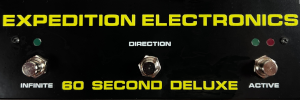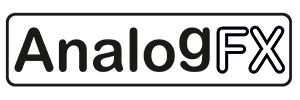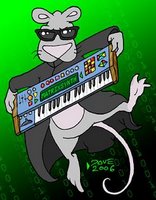Showing posts sorted by relevance for query Maniac. Sort by date Show all posts
Showing posts sorted by relevance for query Maniac. Sort by date Show all posts
Saturday, August 23, 2014
Noyzelab Ulamizer II Cellular Automata Sequencer & MANIAC - Prototype Cellular Automata Module
Image of Noyzelab's Ulamizer II Cellular Automata Sequencer. You'll find more pics and details at Noyzelab here. Below are videos featuring Noyzelab's MANIAC, a prototype cellular automata generative music hardware module. If you are not familiar with Cellular Automata, check out this article on wikipedia. There have been numerous apps and hardware to feature the concept for seemingly random sequences (click here for numerours posts featuring Cellular Automata - you might be surprised).
via Noyzelab: "Since the early experiments by contemporary composers such as Iannis Xenakis, interest in the use of Cellular Automata (CA) in music has dramatically increased. ULAMIZER II is a prototype of a CA music module, designed to be part of the Noyzelab studio environment for both modular and MIDI synthesizers. This module design has now been integrated into my MANIAC / Arthur development systems"
Uploaded on Jan 30, 2012 noyzelab
"MANIAC - a prototype cellular automata generative music module in a eurorack case.
composite video out, MIDI in/out, PS2 keybd, stereo audio out, 8 cell gates out, clock in/out, sundry control switches, USB programmers port at rear
Module is playing a Yamaha FS1R synthesizer via the MIDI out
http://noyzelab.blogspot.com/2012/01/..."
MANIAC NEW CV interface + uTonal
Published on Apr 16, 2012
"quick vid test of MANIAC with a new panel of 8xcv in & 2 x cv out + 2 microtonal oscillators all on the same module. cv outs are going to filter and eg attack rate. uTonal osc's are being driven directly from CA states and 2 CV knobs controlling the mapping.
http://noyzelab.blogspot.com.au/2012/..."
Tuesday, April 10, 2018
Noyzelab At EMS Stockholm w/ Buchla, Serge, Aphex Twin/Richard D James Fairlight and More
Published on Apr 10, 2018 noyzelab
"A quick iphone recording during a session on the Fylkingen Buchla 200 at EMS Stockholm.
FM patch with my MANIAC cellular automata sequencer.
Recorded February 2017 at EMS Sweden during my Regional Arts Fellowship. This Regional Arts Fellowship is supported by the NSW Government through Create NSW.
http://elektronmusikstudion.se/
Thanks to absolutely everybody at EMS!"
SERGE@EMS MANIAC
Published on Apr 10, 2018
"A quick iphone recording during a session on the Serge modular with my MANIAC cellular automata sequencer at EMS Stockholm."
Playlist descriptions:
1. RAINWIRE [PROCESSED] AFXs Fairlight #11
Fairlight CMI Series 12. RAINWIRE [PROCESSED] EMS Sweden Settels+Buchla et al [Excerpt]
MANIAC cellular automata sequencer
Zoom F8
MOTU Microbook II
MacBook Pro
Recorded February 2017 during my Regional Arts Fellowship. This Regional Arts Fellowship is supported by the NSW Government through Create NSW.
Thanks to Richard D James for use of the Fairlight.
Roberta Settels diode transformer ring modulator3. RAINWIRE [PROCESSED] EMS Sweden Buchla 288v [Excerpt]
Noyzelab custom built diode transformer ring modulator
Buchla 200
MOTU Microbook II
MacBook Pro
Recorded in Logic Pro 10, excerpt mixed down using REAPER 5
Recorded May/June 2017 at EMS Sweden during my Regional Arts Fellowship. This Regional Arts Fellowship is supported by the NSW Government through Create NSW.
Thanks to absolutely everybody at EMS!!
Buchla 2004. RAINWIRE [PROCESSED] UNI of HULL VCS3 [Excerpt]
MANIAC cellular automata sequencer
MOTU Microbook II
MacBook Pro
Recorded in Logic Pro 10 from a mix of the 288v Time Domain Processor outputs, excerpt mixed down using REAPER 5
Recorded May/June 2017 at EMS Sweden during my Regional Arts Fellowship. This Regional Arts Fellowship is supported by the NSW Government through Create NSW.
Thanks to absolutely everybody at EMS!!
EMS VCS3 MKII
MOTU Microbook II
MacBook Pro
Recorded in Logic Pro 10, excerpt mixed down using REAPER 5
Recorded March 2017 at University of Hull, UK during my Regional Arts Fellowship. This Regional Arts Fellowship is supported by the NSW Government through Create NSW.
Thanks to Rob Mackay at University of Hull.
See the Noyzelab label below for more.
Thursday, August 14, 2025
Maniac/Michael Sembello (Circuit Tracks Version)
video upload by Guinan
"Feeling a yearning for a bit of LinnDrum action I loaded up a bunch of samples and it occurred to me to try this song - a bit of a musical 'guilty pleasure' as it has such a distinctive rhythm. I put the song on, donned my legwarmers and had a bit of a 'spin' around the room to the track in my best 'Flashdance' impression. Straight away it became apparent it shouldn't be possible to do it on the Tracks as it has too many tracks. Bass, electric piano chords, arpeggio, melody...and a distinctive 80's guitar solo! Not to be deterred I shrank it down as much as I could and used the layering and extra voices hacks I've talked about elsewhere * and what you hear is the end result.
It was a fun challenge and I hope you enjoy the end result. All you hear was programmed into a single Circuit Tracks and played 'live' just recording the audio outs.
More details for synth nerds
The excellent @CaptainPikant had a great video breaking down how the rhythm track was constructed so I largely followed this guide.
• MANIAC - The most INSANE drum pattern of t... [below]
BPM 155bpm
Synth 1 - mono bass synth
Synth 2 - 'piano'ish patch playing chords, arepeggio and melody lines (at different velocities/ranges)
Drum 1- LM1 bass drum
Drum 2 - LM1 snare and sidestick
Drum 3 - LM1 hihats and combined HH and fake guitar (see below)
Drum 4 - LM1 cowbell and clap
The 'guitar' is faked I'm sorry. My lead guitar skills are not up to this (I did try!) and my friendly local 'shredder' was busy. I used instead the Native Instruments Electric Sunburst plug in instrument to fake a short solo and drenched it in guitar effects. I recorded to 4 bar loops with the hihat pattern duplicated along with them and then triggered the samples at the right moment on the hihat track."
MANIAC - The most INSANE drum pattern of the '80s | Drum Patterns Explained
video upload by Captain Pikant
"The drum pattern of Michael Sembello's 'Maniac' is positively insane. It's what you'd get if you made a Synthwave drum track, decided it wasn't complex enough, glitched it up with a tiny dash of Aphex Twin and then put a second drum track on top of that with over a dozen Tom fills for good measure. Pure '80s maximalism with two of the most iconic drum sounds of that era."
And the original:
video upload by Maniac
Monday, September 21, 2009
David Vorhaus Analogue Electronic Music 1979
YouTube via JeffreyPlaide
"In this historical video excerpt, David Vorhaus talks about two of his analogue inventions - the MANIAC analogue sequencer, and the Kaleidophon from 1979. The MANIAC (Multiphasic Analog Inter-Active Chromataphonic (sequencer)) was an analogue sequencer having variable step lengths, and the ability to split sequences into several smaller groupings giving considerable sonic potentiality. Addition and subtraction of events was possible, as well as the possibility to chromatically correct the output during performance. David could program his MANIAC sequencer to play a background rhythm or combination of musical events, to then improvise over the top with another instrument or synthesizer. The Kaleidophon was a double-bass-like instrument using four velocity-sensitive ribbon controllers instead of strings. The instrument is played entirely using the left hand, leaving the right hand free to manipulate the sound via a number of controllers and a joystick. David speaks about the processes of making electronic music, and the developments that such possibilities can provide for the imaginative electronic musician. This excerpt is taken from the BBC 1979 documentary entitled "The New Sound of Music" hosted by Michael Rodd."
Update via Mark Jenkins in the comments: "David Vorhaus now has a new version of the M.A.N.I.A.C. sequencer designed as a complete music system on a PC, and a new custom built MIDI version of the Kaleidophon controller. We've been performing as a duo with this setup for a couple of years, including shows in Holland, Germany, China and France as well as the UK. And yes, we have been playing "Cygnus Constellation", the piece heard at the end of this clip :-) The next show is in London on Saturday November 28th at the Greenwich Planetarium, where we'll be performing new White Noise music, and my own planetarium show "Supernova" which has a complete computer graphic backing. Tickets from the National Maritime Museum (£18.00 I think if sales aren't already live on their website www.nmm.ac.uk) and there are early and late shows the same evening. Hope to see some of you there - Mark Jenkins"
Update: also see this post. via Dustin.
Thursday, July 05, 2018
NYZ - NTE GDN => Behind the scenes with the Yamaha FB-01
Photo Credit: Calum Gunn * all other pix by NYZ *
"The new NYZ - NTE GDN tape on Conditional is just out [limited edition of 50 copies]! Matrix heard on the synth grapevine that it heavily featured the Yamaha FB-01 operating in a secret sysex mode, so he asked me if I'd write a little about how it was used. You can check the album out on the Conditional Bandcamp page here, release date July 6th =>
and have a listen while reading. Its also available from Boomkat [with track previews] =>
Boomkat review => "Blinding new batch of synth and computer music chaos from Dave Burraston’s cultishly regarded NYZ. With such a wild variation to his purist approach it’s perhaps silly to draw comparisons or contrasts, but these are patently some of NYZ’s sweeter treats, such as the curdled harmonics of ‘ARTOFNYZbitcompander’ and the funky lil’ vamps of ‘RLD syncs’ for more insatiable and curious listeners. In other words it’s fucking ace!"
and Norman Records =>
Norman Records review => "9/10 Conditional unleash this beautifully wild and playful tape from David Burraston aka NYZ. Here he harnesses the spectrum splitting potential of John Chowning’s FM synthesis to birth and animate ludicrously cute and cuddly synthetic creatures that come to life before our very ears. What even are these little mutant alien lifeforms? Where is this strange place in which they dwell?
The overall experience of imbibing these sounds is a lot like an experience I once had watching Teletubbies on acid, where I thought the little blighters were actually communicating directly to me. This world NYZ has created and its inhabitants are clearly fantasy, but it’s so brilliantly, vividly realised and skillfully executed that if you just let go of the shackles of reality and submit yourself, it can be an authentic place where these things live and breathe, eat and sleep and go through their life cycle. We get to hang out with them as they speak, sing, laugh and cry. I’d much rather hang out with these chirpy little fellows because humans are the absolute worst. For music to get a miserable, misanthropic, curmudgeon bastard like me to grin like a child holding a cookie the size of its head is quite an achievement.
This tape is just so much fun - it's like a little utopia for the most part, but there are occasional darker moments - at times it feels like the big bad wolf or some kind of predator is lurking with intent to gobble up our little friends. Burraston’s custom-built MANIAC Cellular Automata Sequencer is instrumental in giving life to these sounds - a tool that gives this work a unique voice and an unpredictable energy that seems to organically flow through his machines. This music is most certainly unconventional even by avant-garde standards, and although on the surface is definitely weird and kinda eccentric, it taps into something deeper. Like Victor Frankenstein’s unorthodox scientific experiment in Mary Shelley's novel where scientist becomes an architect of life. This place, it's lifeforms and their language seems bewilderingly genuine - a sonic virtual reality -- a hybrid analogue/digital world where what is “real” and synthetic is blurred."

So why am I interested in the strange and esoteric Yamaha FB-01, and what are these secret sysex codes? Well, first up its a nice little 8 voice FM synth, and I'm well known for being a bit obsessed with FM [see the NYZ - DRN4 Declassified article]. Secondly, its a kind of in-between synth, arriving after the first 4 operator synths, such the DX21, but before the TX81Z which featured a full microtonal tuning table. Its this inbetweeness that really interested me, and its really the only first gen sine wave only 4op that can be micro-tuned, albeit in a very roundabout way via some secret sysex codes.
Monday, December 05, 2016
NYZ DRNH Limited Cassette Release on Gamma Mine Featuring Hinton Instruments Modular
Dave Burraston aka NYZ/noyzelab has a new release out titled DRNH soon available on cassette and digital download. You'll find some info on the gear used exclusively for MATRIXSYNTH further below, but first, here is some info on the release via noyzelab:
"Launching Gamma Mine's explorations into electronic systems music is 'DRNH', a new release from award winning artist Dave Burraston. “DRNH” continues 2016's releases from the ever-prolific artist, who has released works on labels including .MEDS, Feral Tapes, Computer Club and ALKU, this year alone.
Under his NYZ alias, Burraston studies modulation-based synthesis techniques from his Noyzelab studio, NSW, Australia. As an extension to the activities captured on 'DRN4' (.MEDS, 2016), the systems utilised on “DRNH” have been broadened to include additive synthesis, ring modulation and non-linear waveshaping alongside Burraston's staple frequency modulation synthesis techniques. The following is a declassified listing of equipment used in this research:
Hinton Instruments Music Lab modular prototype
Yamaha SY99 & TG77 with cellular automata generated microtunings
MANIAC/Ulamizer-II cellular automata sequencing
Tiptop Z-DSP & Numberz with custom programs
The result is a collection of recordings which take the listener from sci-fi atmospheres (“NYZ-1_HI-SIN”) to whirring electronics (“NYZ_Z-DSP+NUMBERZ-DRN1”), playful FM studies (“FM80Pcellular”, “FM60Pcellular”) to meditative drones (“CSN2-excerpt1-mono”, “DRNH”). “DRNH” releases on 9th December 2016 on white C90 cassette and digital formats:
A1. NYZ-1_SHPR_mono (01:40)
A2. NYZ-1_HI-SIN (07:17)
A3. NYZ-1_FM20Pcellular (02:04)
A4. NYZ_Z-DSP+NUMBERZ-DRN1 (06:42)
A5. FM80Pcellular (05:08)
A6. CSN2 excerpt1-mono (14:29)
A7. FM60Pcellular (05:42)
B1. DRNH (44:44)"
MATRIXSYNTH - NYZ - DRNH synth info leak
 --- NYZ:DRNH INFO LEAK MSG BEGINS ---
--- NYZ:DRNH INFO LEAK MSG BEGINS ---Matrixsynth asked NYZ for some extra info on this release, so this extra bonus snippet is provided exclusively!
=>
 Thanks for asking for some more info on the NYZ - DRNH release, this tape has been great fun to put together. Finlay Shakespeare (Moog Sound Lab UK engineer/tech & also the guy who runs Future Sound Systems eurorack modular) has done a great mastering job on it for his new Gamma Mine label.
Thanks for asking for some more info on the NYZ - DRNH release, this tape has been great fun to put together. Finlay Shakespeare (Moog Sound Lab UK engineer/tech & also the guy who runs Future Sound Systems eurorack modular) has done a great mastering job on it for his new Gamma Mine label. The equipment I listed up on Noyzelab is not everything that was used.. but covers a fair bit of ground. I can give you a few extra bits of info though :
NYZ_Z-DSP+NUMBERZ-DRN1 - Made using the Intellijel/Cylonix Cyclebox-II+Expander going into a Tiptop Z-DSP with some custom programs I've written. A big thanks to Richard D James for giving me my first blank Z-DSP cartridge.. "ere u go, get on with summat" or words to that effect :) In this case it was using various ring modulation schemes. For a great reference I highly recommend Graham Hinton's ModMix application pages which details a range of ringmod/wave shaping algorithms :
applications.htm
moreapplications.htm
CSN2 excerpt1-mono - This is from some Hinton Instruments Music Lab modular sessions in 2013, and the methodology is pretty much the same as discussed in 'NYZ DRN4 Declassified' on Matrixsynth. A type of FM/additive/RM switched synthesis controlled via a cellular automata network (MANIAC cellular automata sequencer). The CSN is referred to in my notes as "Complicated Switching Network" so using complex systems to re-route sounds, a bit like a telephone network, imagine a bunch of ants running around repatching a modular synth and thats probably something like what's happening.. I often set these up and run them for days, take a few recordings here and there, it was nice just to listen sometimes as well, not to take a recording. I end up doing that a lot with these realtime generative/algorithmic systems because (depending on the parameters) they can take a long time to unfold, and sometimes you might just want the bit that happens after a few days, just let the system run till then..
FM60Pcellular - This was all done on a TG77 sequenced by the MANIAC cellular automata sequencer, with the original programming done using the SY99. I like to program on the SY99, but these days the outputs are getting very scratchy, so I transfer stuff over MIDI to the TG77 and do the final setup/mix with that + its got 8 individual outputs so little bit extra mixing scope. The voicing on this is a simple mix of FM/AWM voices, the bassline sound is the AWM voice. There's a great resource on SY99/TG77 programming written by Herbert Janssen, which also includes a section on waveshaping :
Monday, July 13, 2009
SY MANN - SWITCHED ON SANTA - Tijuana Christmas (1970)
YouTube via cosmocorps2000.
Don't miss the kawazy vid below. "SY MANN showed his earliest musical talent at age 6 when he began to correct mistakes, made by his older sister who was then a cello student, by reaching up to the keyboard of the family player-piano and striking the "right notes". His parents took him to a piano instructor when he was 7 and in a short time it was discovered that he possessed absolute pitch. During public school assemblies he gave demonstrations of this phenomenon to the applause and wonder of his classmates and teachers. He continued his music education at NYU. Excelling in his music studies, Sy was elected to membership in the National Honorary music fraternity, PHI MU ALPHA SINFONIA and, later, held the post of student president of the music department of NYU School of Education. Back in civilian life after almost 4 years of service, Sy returned to NYU for his B.S. degree in Music Education, now a married man and father of a baby boy. Not particularly desirous of entering the teaching field, Sy continued with performing engagements, playing for most of show business' top acts as well as stints with the bands of Alvino Ray and Benny Goodman. In 1949 he entered the radio field as staff pianist and arranger for New York's top independent station WNEW. He then established himself in the recording, jingle and film music fields. In 1954 he joined the CBS music staff and currently is pianist-arranger on the Arthur Godfrey Show where he doubles on trumpet, vibraphone, clavietta, electric harpsichord and other assorted keyboard instruments. He has contributed his talents to numerous stars like Barbra Streisand, Tiny Tim, Sammy Davis, Connie Francis. Anybody who plays piano can play The Moog Synthesizer. It is a computer like instrument with a piano keyboard. Since only one note sounds at a time to make music one needs a multi-track tape recorder to record each line of music separately. An electronic engineer is needed not only for the circuitry but also to program the millions of different sound combinations available — also each time the sound is changed The Moog has to be tuned! It takes about one hour of recording time to produce 30 seconds of listenable music. In this album Sy takes the Moog Synthesizer and creates today's electronic Christmas tree out of this new musical wonder. The Moog, a strange machine of lights, cords, inputs and outputs enters the festive world of the merriest season of all. It's a wonderful gift for today's caroleers. Sy Mann giftwraps all your Christmas favorites in the most exciting musical sound, and puts them under your glittering tree. Gift tagged to read 'Merry Christmas from The Moog!'"
SY MANN - SWITCHED ON SANTA - My Favorite Things (1970)
"MUSIC: Sy Mann - My Favorite Things from the album SWITCHED ON SANTA! (1970) One of this numerous Moog records from the past. Now the Moog plays popular xmas songs VIDEO: Scenes from Tales From The Crypt (GB 1972) Episode: All Through The House Starring Joan Collins After Joanne Clayton (Joan Collins) kills her husband on Christmas Eve, she prepares to hide his body but hears a radio announcement stating that a homicidal maniac (Oliver MacGreevy) is on the loose. She sees the maniac outside her house but can't call the police because of her husband's body. The segment ends with the maniac, dressed as Santa Claus, being let into the house by Joanne's little daughter. He strangles Joanne to death. (from Wikipedia)."
Update via Mal in the comments: "This was recorded in Jean-Jacques Perrey's Recording studio in Manhattan using his (and Gershon Kingsley's) moog modular. Jean-jacques engineered the album (uncredited) and I also believe that manny of the tracks were actually arranged and recorded by him. Also... Santa on the front cover is in fact Jean-Jacques Perrey!!!"
Friday, May 17, 2019
The Seventh Wave Festival of Electronic Music #7 w/ Delia Derbyshire Collaborator David Vorhaus
David Vorhaus Analogue Electronic Music 1979 Published on Sep 13, 2009 JeffreyPlaide
Update: Festival info further below. Thought I would start with a couple of videos featuring David Vorhaus.
"In this historical video excerpt, David Vorhaus talks about two of his analogue inventions - the MANIAC analogue sequencer, and the Kaleidophon from 1979.
The MANIAC (Multiphasic Analog Inter-Active Chromataphonic (sequencer)) was an analogue sequencer having variable step lengths, and the ability to split sequences into several smaller groupings giving considerable sonic potentiality. Addition and subtraction of events was possible, as well as the possibility to chromatically correct the output during performance. David could program his MANIAC sequencer to play a background rhythm or combination of musical events, to then improvise over the top with another instrument or synthesizer.
The Kaleidophon was a double-bass-like instrument using four velocity-sensitive ribbon controllers instead of strings. The instrument is played entirely using the left hand, leaving the right hand free to manipulate the sound via a number of controllers and a joystick.
David speaks about the processes of making electronic music, and the developments that such possibilities can provide for the imaginative electronic musician. This excerpt is taken from the BBC 1979 documentary entitled "The New Sound of Music" hosted by Michael Rodd."
WHITE NOISE Electric Storm in Hell [not quite Full Album]
Published on Mar 9, 2013 musick2138
"The Seventh Wave presents
White Noise - a Fifty Years Celebration of An Electric Storm & Other Sonic Adventures
Voyd - live set / White Noise - live set / White Noise - talk and q&a
Friday 14 June 2019 Doors 6.30 pm.
Curfew 10.00 pm.
 The Blue Orange Theatre, 118 Great Hampton Street, Jewellery Quarter, Birmingham B18 6AD.
The Blue Orange Theatre, 118 Great Hampton Street, Jewellery Quarter, Birmingham B18 6AD.White Noise - An Electric Storm - Review
When White Noise's debut album, An Electric Storm, landed on Island Records in 1969, it must have sounded like nothing else. Packaged in a striking black and white sleeve that pictured a spark of lightning streaking across a black sky, this was an album that - quite rightly as it turned out - resembled as much a scientific experiment as any conventional musical document.
White Noise came into being when David Vorhaus, an American electronics student with a passion for experimental sound and classical music attended a lecture by Delia Derbyshire, a sound scientist at the BBC's Radiophonic Workshop whose claim to fame was writing the original Doctor Who theme tune. With the help of fellow Radiophonic Workshop composer Brian Hodgeson, Vorhaus and Derbyshire hunkered down at Kaleidophon Studios in Camden to pen an album that reconciled pop music with the experimental avant-garde. The result is a set of eerie, delightful songs that, for all their surface simplicity, shimmer with vestigial synthesiser swells, strange echoes, disembodied voices, and distant music-box trills.
Outside of a few equally adventurous '60s releases - the debut album from US psychedelic pioneers The United States Of America, for instance - this is pretty much uncharted territory, particularly for a major label release. On ''My Game Of Loving'', a dozen multi-tracked voices built to a panting orgasm, while the closing ''Black Mass An Electric Storm In Hell'' ushers the record to a freeform close in a clatter of freeform drums, cavernous echo and chilling, animalistic screams. Perhaps unsurprisingly, An Electric Storm would struggle to find an audience on its release, and in the following years, great leaps in synthesiser technology somewhat diminished White Noise's experimental achievements. One thing that would remain timeless, however, were the songs themselves. An Electric Storm would later become a key inspiration on bands like Add (N) To X and Broadcast, synthesiser explorers who picked through these primitive, vestigial sound experiments, took careful notes, and eventually, set out to craft their own futuristic pop lullabies.
http://www.bbc.co.uk/music/reviews/pq9x/
The other two dates of the festival feature:
Banco de Gaia (Toby Marks) - he will once again be accompanied by Patrick Dunn on visuals (Patrick produces visual content for Tangerine Dream!!!).
The Black Dog is a British electronic music group, founded by Ken Downie along with Ed Handley and Andy Turner. The group are considered pioneers who, along with acts like Autechre, Aphex Twin, LFO et al came to define the UK techno movement in the early 1990's.
For further information email theseventhwave@btinternet.com
Tickets available at https://www.skiddle.com/groups/theseventhwave/"
Thursday, May 29, 2025
Behind The Drums Ep 15 - Flashdance "Maniac" - Michael Sembello Linndrum
video upload by Controlled Voltage Sound Labs
"An in depth look at the making of Michael Sembello's number one hit 'Maniac,' from the Flashdance movie soundtrack. Video includes a re-cretion of the drum beat using a Linndrum."
Drum Processing
Kick - Teletronix LA-2A (No Reverb)
Snare + Tamb - Teletronix LA-2A + Lexicon 224 (Plate Setting)
Cowbell - Teletronix LA-2A (No Reverb)
Clap - AMS Reverb (Non Lin Short decay)
Stick - Teletronix LA-2A (No Reverb)
Hat - Teletronix LA-2A + Lexicon 224 (Room Setting)
Tuesday, November 20, 2018
Vinyl Debut by NYZ - SHFTR FRQ - Featuring Aphex Twin's Sequentix Cirklon & PreenFM2
"+ [Special note for track A9 - SHFTR_CA#BB1] => A huge shout of thanks to Richard D James for gifting me a Sequentix Cirklon sequencer and PreenFM2 synth during my Regional Arts Fellowship in 2017! This was the first track I made using this gear. You can also read up more about my open source Farey Sequence FM programming tool for the PreenFM here =>
github.com/noyzelab/FareyPreenFM2
++ Folks interested in using cellular automata can also check out my open source Arduino based synth module here =>
github.com/noyzelab/uMANIAC"
NYZ of Noyzelab has a new release out on neon orange vinyl (limited to 300 copies) titled SHFTR FRQ which features PreenFM2 sequenced by the Sequentix Cirklon. You will find a track off the release above. Below you will find some exclusive pics sent my way from NYZ and info on the release from Forced Exposure where it is available in the US. The album is available in the UK from Boomkat here. Update: it's also available at Phonica Records, Norman Records, Juno Records, Redeye Records, and Bleep.
 "The Death of Rave is honored to plate up the vinyl debut by NYZ; the cult, algorithmic/ generative music project of award-winning artist/scientist Dave Burraston (Bryen Telko, Noyzelab). The A-side revolves 14 succinct blatz, ranging from cranky percussive pieces to queered microtonal dissonance and SAW II-like atmospheres -- notably including one track made on a Sequentix Cirklon sequencer and PreenFM2 synth gifted him by Richard D. James. The B-side contains a steeply immersive spectral drone tract that (never) ends in a locked groove, especially cut at D&M, Berlin. The results are wholly unique and speak to the endless, playfully experimental variation of NYZ's art/research. They reveal visceral, alien microcosms of curdled microtonal tunings and proprioceptive chicanery bound to thrill and induce strange, new sensations in even the most hard-to-please fiend of electronic music. It's strongly recommended to followers of Russell Haswell's chaotic gnash, the mind-bending tunings of Aphex Twin, the visionary algorithmic scapes of Roland Kayn, and Eliane Radigue's microtonal meditations. In Dave's own words:
"The Death of Rave is honored to plate up the vinyl debut by NYZ; the cult, algorithmic/ generative music project of award-winning artist/scientist Dave Burraston (Bryen Telko, Noyzelab). The A-side revolves 14 succinct blatz, ranging from cranky percussive pieces to queered microtonal dissonance and SAW II-like atmospheres -- notably including one track made on a Sequentix Cirklon sequencer and PreenFM2 synth gifted him by Richard D. James. The B-side contains a steeply immersive spectral drone tract that (never) ends in a locked groove, especially cut at D&M, Berlin. The results are wholly unique and speak to the endless, playfully experimental variation of NYZ's art/research. They reveal visceral, alien microcosms of curdled microtonal tunings and proprioceptive chicanery bound to thrill and induce strange, new sensations in even the most hard-to-please fiend of electronic music. It's strongly recommended to followers of Russell Haswell's chaotic gnash, the mind-bending tunings of Aphex Twin, the visionary algorithmic scapes of Roland Kayn, and Eliane Radigue's microtonal meditations. In Dave's own words: "SHFTR FRQ is a series of experimental studies into simple synth setups controlled by varying levels of generative complex systems [MANIAC cellular automata]. SHFTR FRQ was recorded over the last six years on an ever-changing hybrid of equipment encompassing the domains of modular and MIDI-based microtonal sound synthesis [analog and digital]. Setups were always ultra-minimalist, often with just the MANIAC cellular automata sequencer and one or two modules/synths to provide a consistent sensory focus. The studies range from ultra-short sequences, micro-ditties, investigatory motifs, to a full length high spectral drone meditation."
"SHFTR FRQ is a series of experimental studies into simple synth setups controlled by varying levels of generative complex systems [MANIAC cellular automata]. SHFTR FRQ was recorded over the last six years on an ever-changing hybrid of equipment encompassing the domains of modular and MIDI-based microtonal sound synthesis [analog and digital]. Setups were always ultra-minimalist, often with just the MANIAC cellular automata sequencer and one or two modules/synths to provide a consistent sensory focus. The studies range from ultra-short sequences, micro-ditties, investigatory motifs, to a full length high spectral drone meditation." Burraston has previously collaborated with Alan Lamb on recordings of a mile-long telephone wire in the Australian outback, and more recently he issued nearly a dozen NYZ tapes and CDs with some of the most crucial modern music labels, as well as a number of releases under the Noyzelab and Bryen Telko aliases. In 2014, Dave self-published SYROBONKERS!, the most technical and in-depth interview ever given by Aphex Twin. Screen-printed jacket. RIYL: Russell Haswell, Aphex Twin, Eliane Radigue, EVOL/ALKU, Roland Kayn."
Friday, September 05, 2014
Hinton Music Lab ML1890 Switch & ML1820 Counter
noyzelab has a couple of posts up on the Hinton ML 1890 & ML 1820. See each link for more pics, links & audio demos.
 The ML 1890: "This module is pretty special having a logic buss at the rear for the 8 switches which I can interface directly to my MANIAC & Arthur prototype systems. This makes them particularly handy for being modulated by Cellular Automata logic patterns. The ML1890 can switch both audio and control voltages and was built by Graham Hinton back in the mid 70's ! The inputs are duplicated to nuclear physics spec Lemo connectors which connect to the virtual earth inputs on the module, allowing input signals to be summed directly on the Pin Matrix module."
The ML 1890: "This module is pretty special having a logic buss at the rear for the 8 switches which I can interface directly to my MANIAC & Arthur prototype systems. This makes them particularly handy for being modulated by Cellular Automata logic patterns. The ML1890 can switch both audio and control voltages and was built by Graham Hinton back in the mid 70's ! The inputs are duplicated to nuclear physics spec Lemo connectors which connect to the virtual earth inputs on the module, allowing input signals to be summed directly on the Pin Matrix module."The ML 1820: "This module is also has a logic buss at the rear for the 8 counter bits, which I can interface directly to my MANIAC & Arthur prototype systems. This makes them particularly handy for being modulated by Cellular Automata logic patterns. The ML1820 was built by Graham Hinton back in the mid 70's using wire wrapping!"
Thursday, September 28, 2017
noyzelab EMS Sweden Residency
Another visit by noyzelab. This one was at EMS Sweden. Click through for the full post include more info and pics of the Buchla system and more.
"On Feb 1 - 12 I was Guest Composer at EMS Elektronmusikstudion in Stockholm, Sweden. I also had my Eurorack modular with Intellijel Shapeshifter, CycleboxII + Expander, Tiptop Z-DSP & Numberz, as well as my uMANIAC and MANIAC cellular automata sequencers and a MacBook Pro + MOTU MicroBookII.
For the creative outcomes I spent my time again working mainly with modulation synthesis such as FM, RM, PWM, AM, and wavetable synthesis via audio rate sequencing. I was also processing sounds from my Rainwire recordings through some pretty exotic effects modules/units, ranging from spring/plate reverbs, modular systems and high end DSP boxes. Some of these recordings appeared in my Rainwire [Processed] installation at Sound+Environment 2017 at Hull University, part of the UK City of Culture 2017..." You can find the full post at noyzelab.
Friday, March 11, 2016
NYZ DRN4 DECLASSIFIED
Exclusive mix on SoundCloud:
Tracklist:
1. NYZ_FMMGKSQ_43t
2. ISR_16x16_WCM
3. CSN [excerpt 2 mono]
4. SWI_r170_16x32x32_B
5. SWI_FM1#16
6. NYZ-1_1#08_A [finite downsized]
7.CSN1 [excerpt 1 mono]
Be sure to see the MATRIXSYNTH exclusive further below!
FM EXPLORATIONS AND MICROTONAL DRONES FROM NYZ (AKA DAVE NOYZE, DAVID BURRASTON, NOYZELAB, BRYEN TELKO)
This is the first release by NYZ and is a superb musical collection of research areas classified to internal Noyzelab operations. Not even .MEDS label were informed of the secret processes underlying its creation, excepting that we know it involved Frequency Modulation (FM) synthesis! We have not been given any information regarding when this work was recorded, but we suspect the material spans at least a decade of David's FM algorithm research on numerous synthesizers, as well his own custom built ear deceiving gear...
According to one reviewer of David's previous musical output he "gleefully disrupts just about every standard convention of musical form you could think of, including those of so-called experimental musics."
Other reviewers have written that :
"His music is a bizarre, yet compelling journey investigating the outer realms of music generated on ancient & contemporary machines." "It's strikingly original audio that doesn't really sound like anything else I can think of." "Utterly sublime. So there you go, a life-affirming slab of mind-altering sound to reawaken you to the terrifying possibilities of creation."
"absolutely wreaks havoc" wrote Keith Fullerton Whitman on reviewing David's last release T. H. Cycle cassette on Important Records/Cassauna .
Cassette releases April 1, 2016
All Audio by David Burraston
Design Tom Knapp
----
MATRIXSYNTH recently asked NYZ why he put together this new album of FM synthesis based explorations, and whether he would discuss some of the process behind it. The declassified information below has been put together by NYZ especially for a MATRIXSYNTH exclusive.
***BEGIN NYZ DRN4 DECLASSIFICATION REPORT***
DC REPORT STATUS: PARTIAL DECLASSIFICATION ONLY
PARTIAL DC STATUS: INCOMPLETE CELLULAR BINARY SPACETIME
PARTIAL DC LEVEL: SEMI-PICTORIAL_TEXTUAL_HIGHLIGHTS
FUTURE DC STATUS: _PENDING
The main reasons for making this album were an interest in FM synthesis in both analogue modular and MIDI/digital mediums. I had worked with digital FM synthesis since getting a Yamaha TX81Z when they came out back in 1987 (which I still have, along with another backup machine with a very hummy mains transformer which bleeds onto the outs). How me and another synth friend used to cry with drunken laughter at preset D11 Hole in 1... :) But after initially wondering whether I had just wasted about 350 UK pounds on an utter piece of shit... I quickly warmed to its better presets, and its very different approach to synthesis yielded enough interesting results early on for it not to get outed.
Tracklist:
1. NYZ_FMMGKSQ_43t
2. ISR_16x16_WCM
3. CSN [excerpt 2 mono]
4. SWI_r170_16x32x32_B
5. SWI_FM1#16
6. NYZ-1_1#08_A [finite downsized]
7.CSN1 [excerpt 1 mono]
Be sure to see the MATRIXSYNTH exclusive further below!
FM EXPLORATIONS AND MICROTONAL DRONES FROM NYZ (AKA DAVE NOYZE, DAVID BURRASTON, NOYZELAB, BRYEN TELKO)
This is the first release by NYZ and is a superb musical collection of research areas classified to internal Noyzelab operations. Not even .MEDS label were informed of the secret processes underlying its creation, excepting that we know it involved Frequency Modulation (FM) synthesis! We have not been given any information regarding when this work was recorded, but we suspect the material spans at least a decade of David's FM algorithm research on numerous synthesizers, as well his own custom built ear deceiving gear...
According to one reviewer of David's previous musical output he "gleefully disrupts just about every standard convention of musical form you could think of, including those of so-called experimental musics."
Other reviewers have written that :
"His music is a bizarre, yet compelling journey investigating the outer realms of music generated on ancient & contemporary machines." "It's strikingly original audio that doesn't really sound like anything else I can think of." "Utterly sublime. So there you go, a life-affirming slab of mind-altering sound to reawaken you to the terrifying possibilities of creation."
"absolutely wreaks havoc" wrote Keith Fullerton Whitman on reviewing David's last release T. H. Cycle cassette on Important Records/Cassauna .
Cassette releases April 1, 2016
All Audio by David Burraston
Design Tom Knapp
----
MATRIXSYNTH recently asked NYZ why he put together this new album of FM synthesis based explorations, and whether he would discuss some of the process behind it. The declassified information below has been put together by NYZ especially for a MATRIXSYNTH exclusive.
***BEGIN NYZ DRN4 DECLASSIFICATION REPORT***
DC REPORT STATUS: PARTIAL DECLASSIFICATION ONLY
PARTIAL DC STATUS: INCOMPLETE CELLULAR BINARY SPACETIME
PARTIAL DC LEVEL: SEMI-PICTORIAL_TEXTUAL_HIGHLIGHTS
FUTURE DC STATUS: _PENDING
The main reasons for making this album were an interest in FM synthesis in both analogue modular and MIDI/digital mediums. I had worked with digital FM synthesis since getting a Yamaha TX81Z when they came out back in 1987 (which I still have, along with another backup machine with a very hummy mains transformer which bleeds onto the outs). How me and another synth friend used to cry with drunken laughter at preset D11 Hole in 1... :) But after initially wondering whether I had just wasted about 350 UK pounds on an utter piece of shit... I quickly warmed to its better presets, and its very different approach to synthesis yielded enough interesting results early on for it not to get outed.
Thursday, February 03, 2022
Moog Sub37/Subsequent 37: 64 Arp Presets/Patches. Sound Demo
video upload by Anton Anru
"'Analog Groove' is a collection of 64 Arp Patches for Moog Subsequent 37 and Sub 37.
The bank of presets is universal, the Arps are suitable for all genres of electronic music, including Techno, House, Trance, Lounge, Downtempo, Funk, Disco, Pop, Acid, Hardcore, IDM, Drum'n'Bass, Breaks, Breakbeat, Trap, Electro, Ambient, Dubstep, EDM, Synth-Pop and others.
The patches cover a variety of Arp tones: mild and aggressive, deep and bright, simple and complex, soft and punchy, musical and experimental.
🎧 Get the soundset: https://bit.ly/3x756yg
All patches are very dynamic: they have synced modulations, and they are velocity-sensitive. You may hold a chord and add accents to the arpeggio with velocity.
ModWheel is set in all patches, it adds brightness or movement. In sum, Velocity and ModWheel are nice expressive tools that will make any performance lively.
And, of course, you should play with ADSR, Filter Parameters, Arp and LFO Divisions, Arp Direction and Range, to get the best experience of the arps.
You may turn Arp Mode off and get basses, leads, plucks, keys. In this case, it's better to turn KB RESET on in MOD 1 and 2 sections.
Patches' volume levels are set close to each other, you won't get sudden volume spikes or drops while switching the timbres.
Saturday, May 10, 2025
Frap Tools Magnolia - A Bucchla Style Polysynth?.. from a modular manufacturer??
video upload by Starsky Carr
"A demo of the Magnolia from Frap Tools by the lovely Giovanni at@superboothberlin 2025
Im, not doing a whole load of demos this year, just things that catch my eye, and this has been one of the stars of the show
It has such easy access to through zero FM and wavefolding, which enables it to go from very pleasant to a screeching maniac with a couple of twists!"
Friday, September 12, 2014
Hinton Music Lab Module Closeup - ML1812 Sequence Generator
via noyzelab where you'll find additional pics & details.
"Some close up pictures of the Hinton Music Lab modular ML1812 Sequence Generator. The ML1812 was built by Graham Hinton back in the mid 70's using wire wrapping! This module also has a logic buss at the rear for the 8 sequence bits, which I can interface directly to my MANIAC & Arthur prototype systems. This makes them particularly handy for being modulated by Cellular Automata logic patterns."
Wednesday, February 19, 2014
Synth Spotting with Tiny Wight on I♥SYNTHS:
via Jim Smith
"NEW INTERVIEW!! Introducing #010 on iheartsynths with Tiny Wight of The Deadites. See how this masked maniac creates his brand of monster-killing synthpop and take a tour of his gorgeous studio space. "
"I♥SYNTHS: When did you start collecting synthesizers and what was your first?
Tiny Wight: I got my first synth – a little Casio MT-100 – back around 1985 when I was 11 (for “band”). I graduated to the equally terrible Yamaha PSR-47 when I was 13 or so. At 16 I picked up an Ensoniq SQ-1 and things started to get interesting. All of the early Deadites songs were made on this keyboard and an Alesis DM-5 module slaved to the onboard sequencer. I wrote with this combo plus an E-mu Orbit for about a decade, from 1990-2000.
Somewhere in the mid-1990′s, I started using a computer pretty extensively for songwriting, but mostly for sequencing and mixing. I picked up Propellerheads Reason v1 shortly after it came out towards the end of 2000 and used versions of that more or less exclusively until 2012, when I said, “F#*$& this sh#*&. This isn’t fun at all anymore”, and started my synth collection with a limited edition Moog Little Phatty Toxic Edition. Once I got my hands on it, my fate was sealed, and my wallet literally exploded, permanently injuring my right buttock."
Wednesday, July 08, 2015
noyzelab's David Burraston & Russell Haswell: Wired Lab CV Session #1 released on ALKU
noyzelab's latest release with Russell Haswell on tape features his custom maniac cellular automata & spacetime gravity modulator as well as the hinton music lab modular. The limited edition black chrome cassette comes with a 16 page booklet. You'll find full details including additional pics at noyzelab here.
You can find previous posts featuring some of noyzelab's creations including custom work for Aphex Twin, here on MATRIXSYNTH.
Thursday, January 14, 2021
Arturia & Noise Engineering Collaborate on New MicroFreak Firmware V3
MicroFreak - Firmware V3 | Performance by Tom Hall
"Experience MicroFreak’s wild new sonic capabilities first-hand with an immersive glitch-fuelled performance from renowned LA sound designer Tom Hall. For MicroFreak's latest firmware release, V3, we’ve teamed up with Eurorack visionaries Noise Engineering to push MicroFreak further into the digital realm with 3 powerful new oscillator modes."
Arturia x Noise Engineering | Collaborating on MicroFreak Firmware V3
Arturia
"Since its inception in 2019, it’s mad talents have grown exponentially. Numerous free firmware updates, new oscillator modes, fresh presets, and even a limited edition skin with 2020’s Vocoder Edition. This little hybrid maniac has become a living, breathing, ever-changing force of fluid creativity - and is showing no signs of slowing down now. For the latest firmware release, V3, we’ve teamed up with EuroRack visionaries @Noise Engineering to push MicroFreak further into the digital realm with 3 powerful new oscillator modes."
And the official press release:
"Arturia unleashes MicroFreak V3 firmware update, collaboration with Noise Engineering
MicroFreak's mad talents continue to evolve with every free update. Introducing MicroFreak Firmware V3, designed in collaboration with Noise Engineering to push MicroFreak’s sound further into the experimental digital realm. 3 razor-sharp new oscillator modes and a number of enhancements bring gritty digital character, workflow flexibility, and even more creative value to this wild hybrid synth.
3 Noise Engineering oscillator modes
Bass, SawX, Harm; 3 new algorithms that also feature in Noise Engineering’s flexible Virt Iter module, offering additive harmonic color, wavefolding, phase modulation, and more. Digital never sounded so dirty.
Unison mode
Up to 4-voice unison is now available for all oscillator types, with unison spread of up to 12 semitones that can also be used as a modulation destination. Make your basses bigger and your melodies more massive than ever.
More factory presets and slots
The number of preset slots has increased from 256 to 384, giving you more legroom to make MicroFreak your own - this even includes 96 more factory presets for more musical madness straight out the box.
Saving and loading presets
Enhancements to preset functionality makes MicroFreak easier and more intuitive than ever, including loading the last saved preset upon restart, and always retaining Chord Mode’s most recent chord within your saved preset."
Additional details and demos at https://www.arturia.com/products/hardware-synths/microfreak/update
And some pics grabbed from the site:
Tuesday, September 22, 2009
NEXT PAGE
HOME
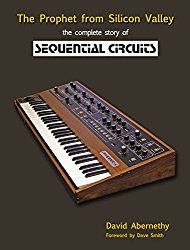
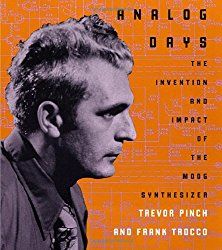
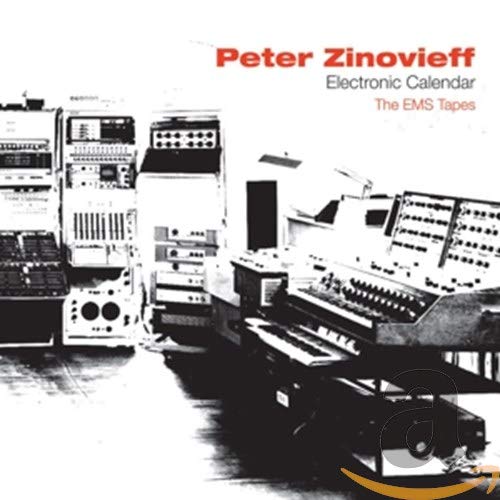
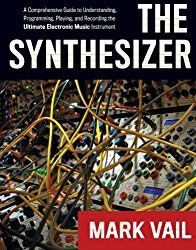

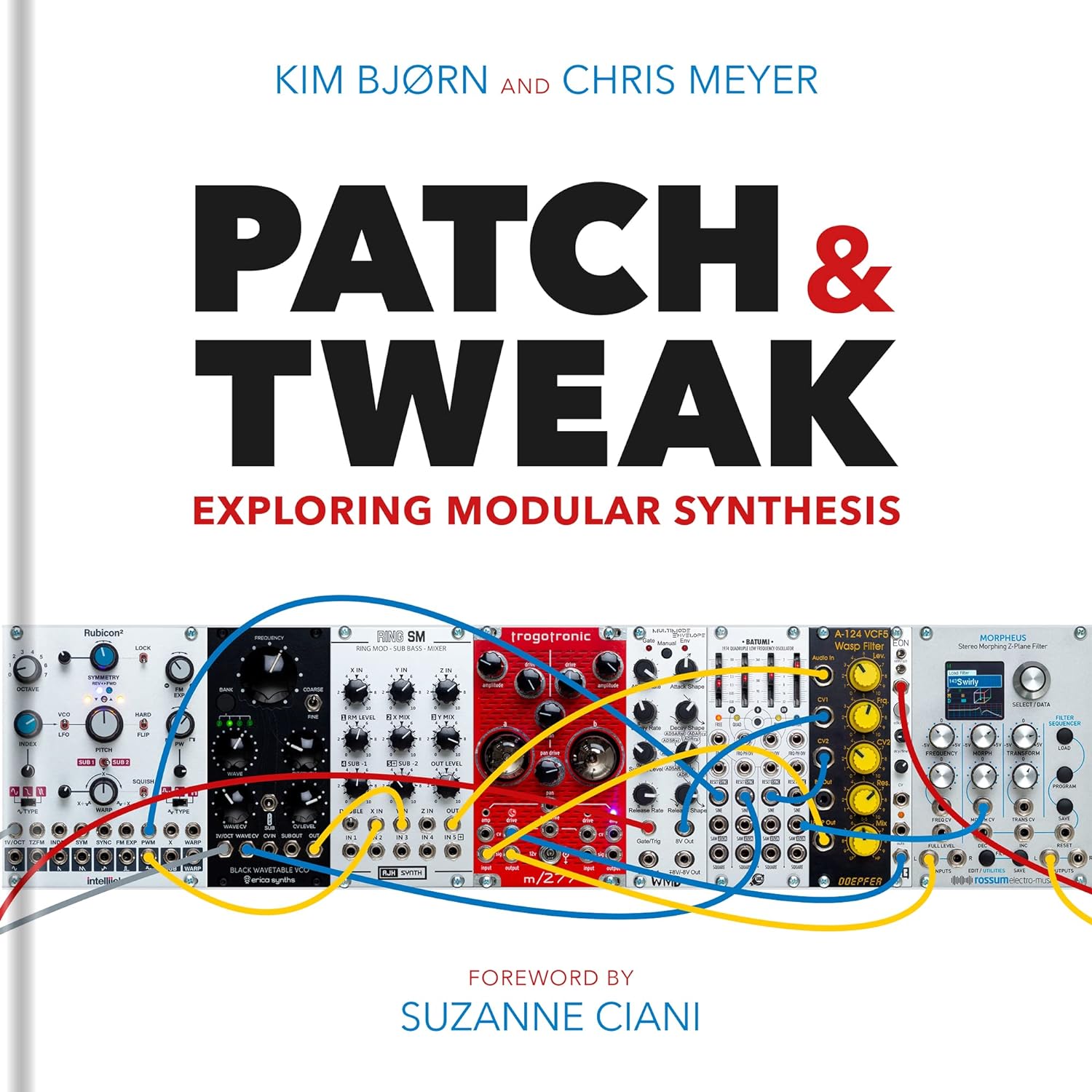
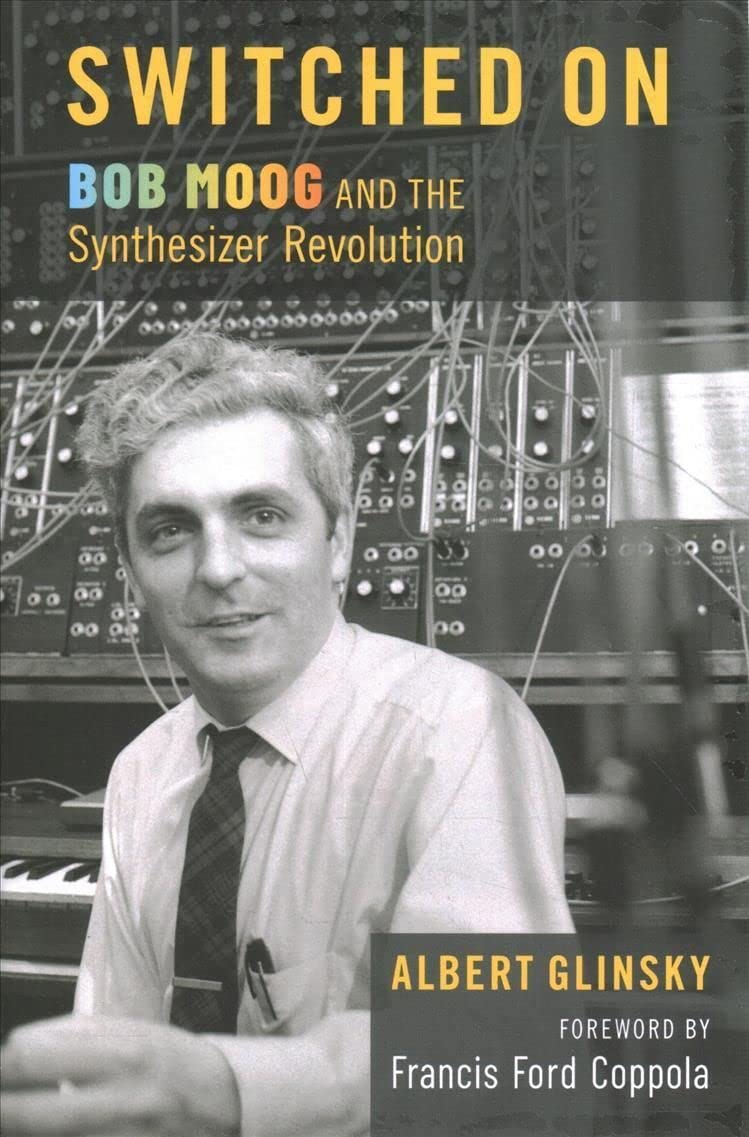
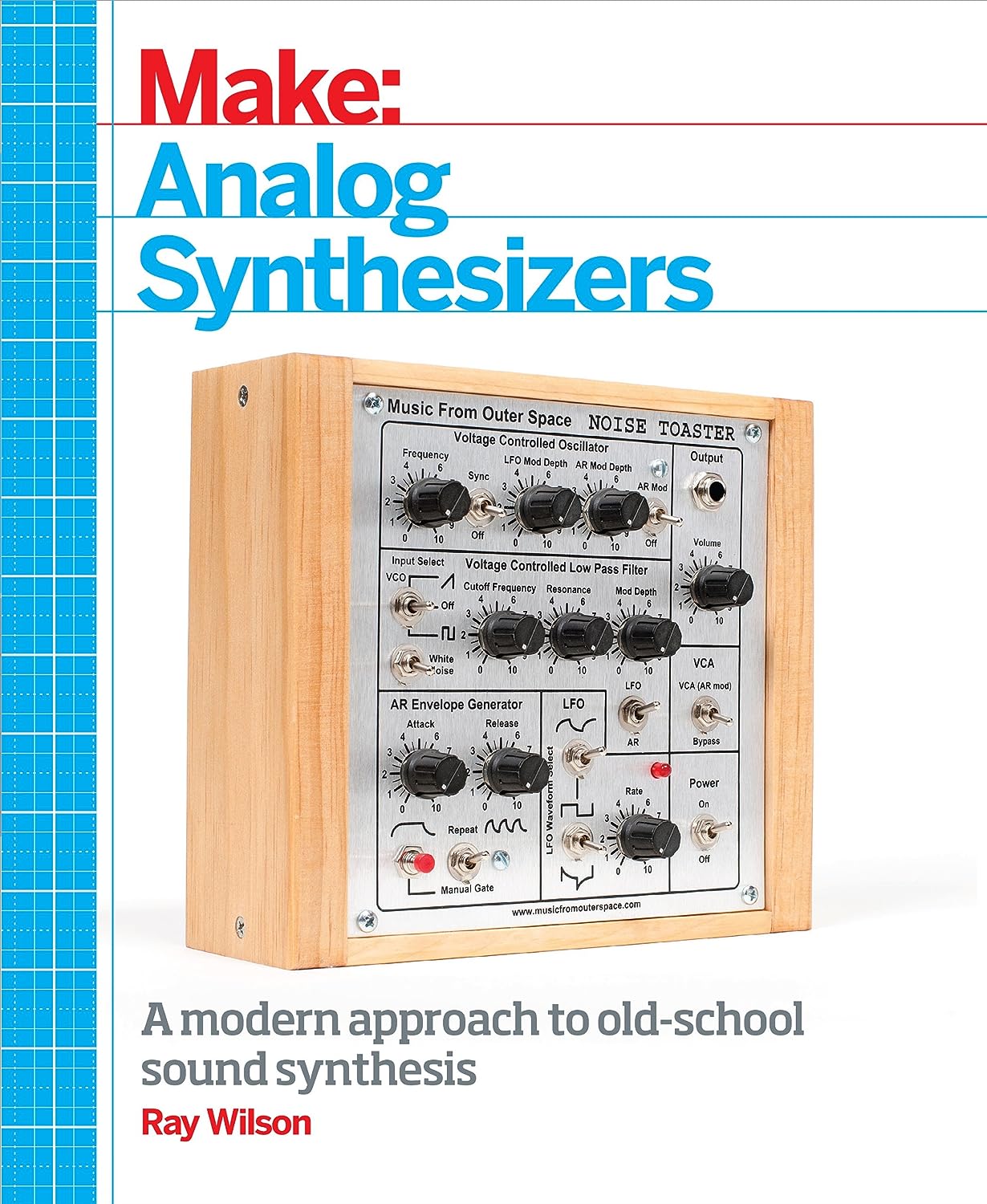
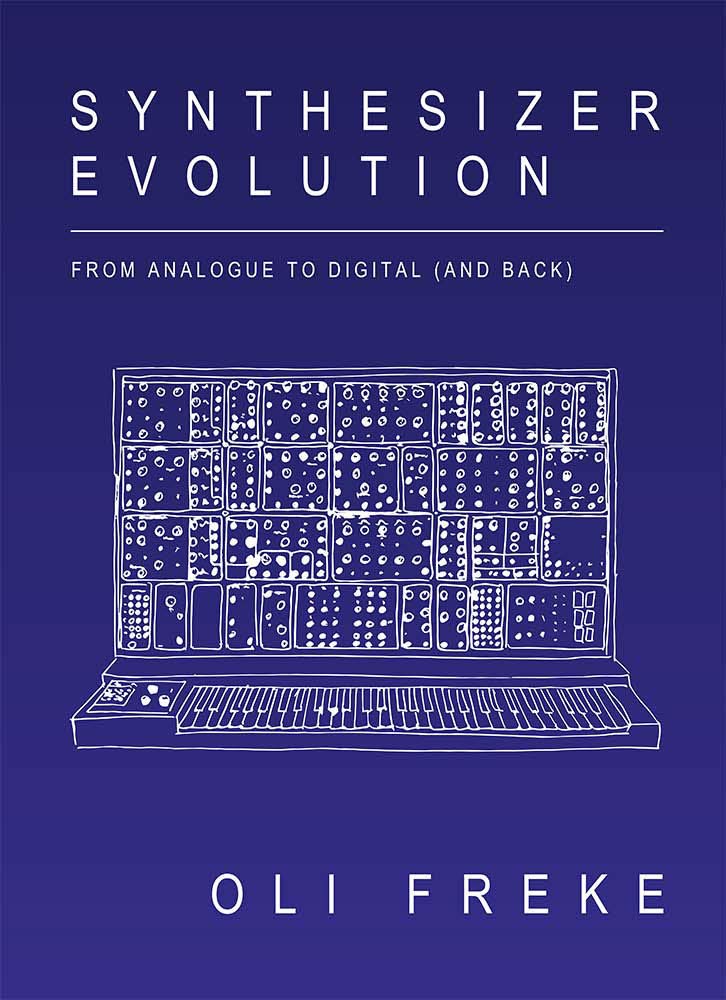

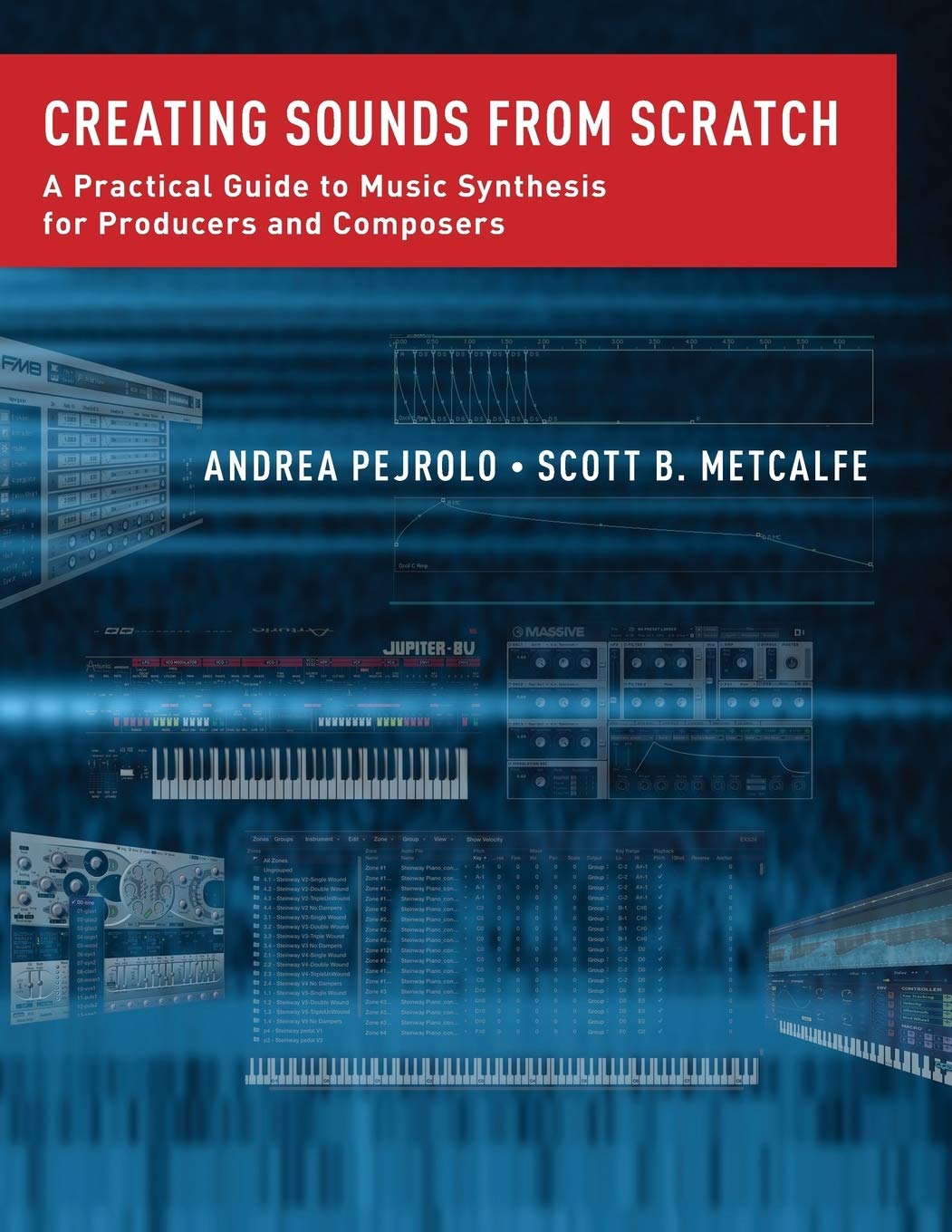


© Matrixsynth - All posts are presented here for informative, historical and educative purposes as applicable within fair use.
MATRIXSYNTH is supported by affiliate links that use cookies to track clickthroughs and sales. See the privacy policy for details.
MATRIXSYNTH - EVERYTHING SYNTH













© Matrixsynth - All posts are presented here for informative, historical and educative purposes as applicable within fair use.
MATRIXSYNTH is supported by affiliate links that use cookies to track clickthroughs and sales. See the privacy policy for details.
MATRIXSYNTH - EVERYTHING SYNTH






























